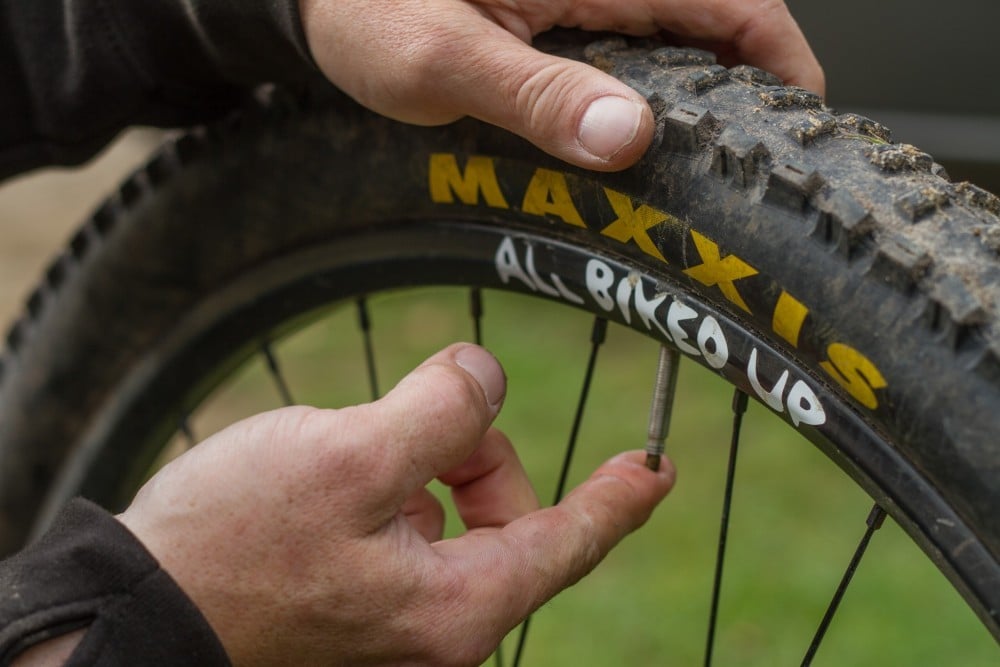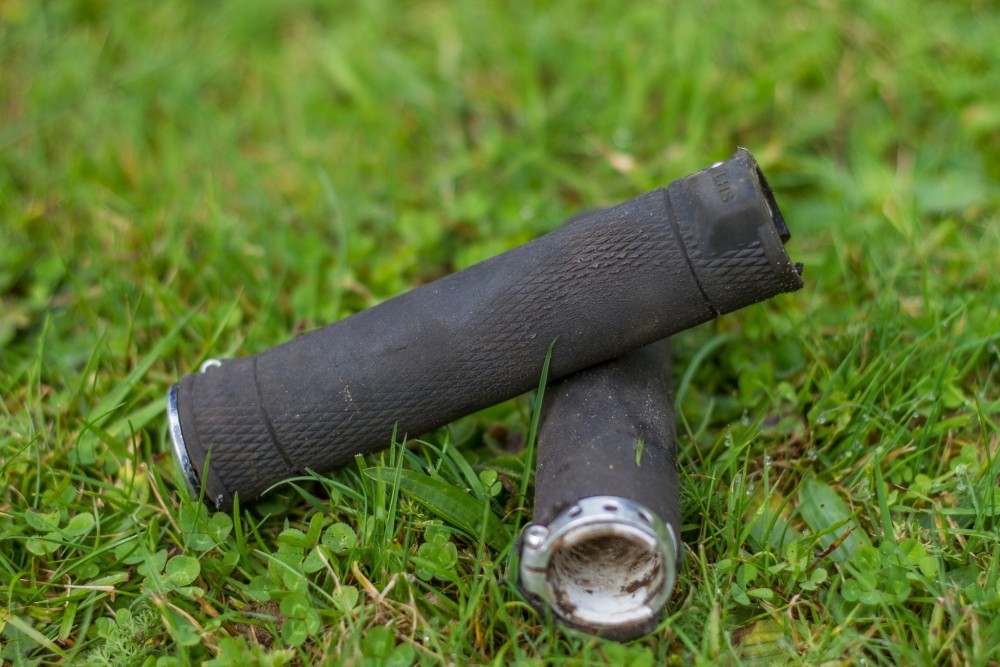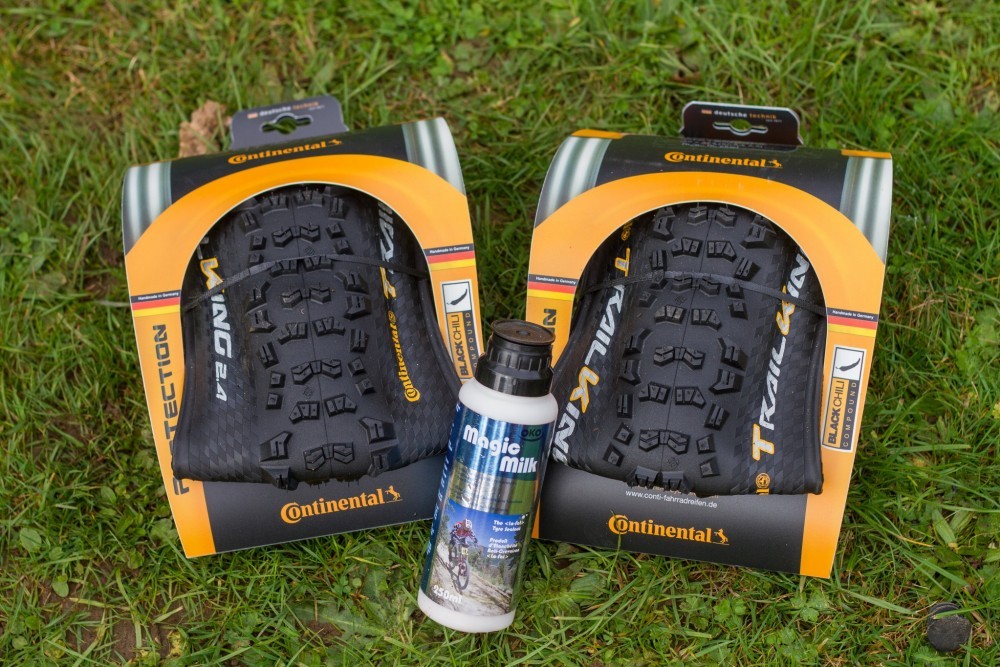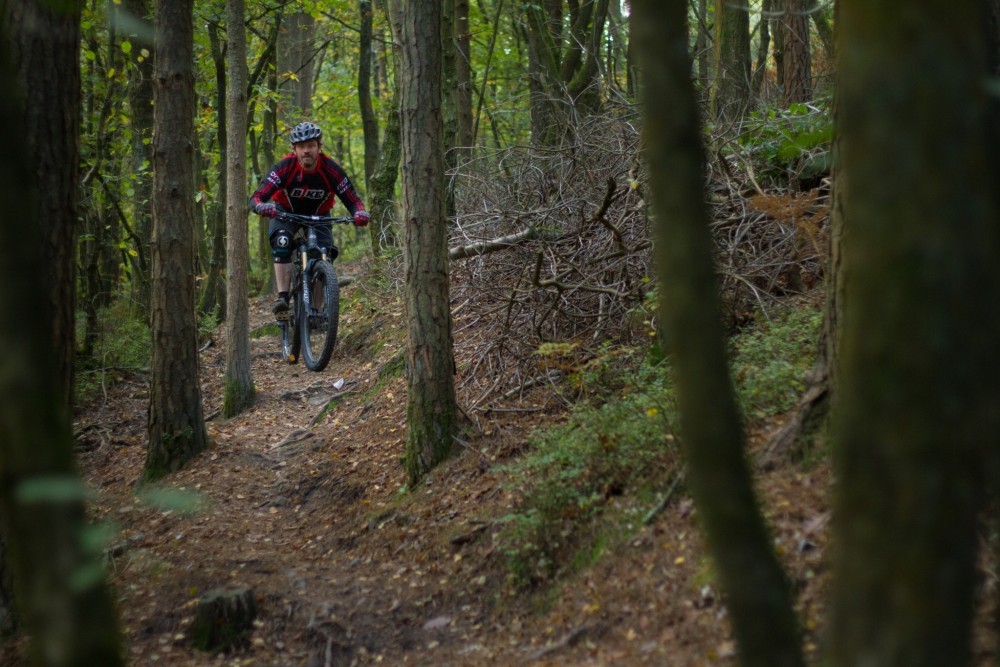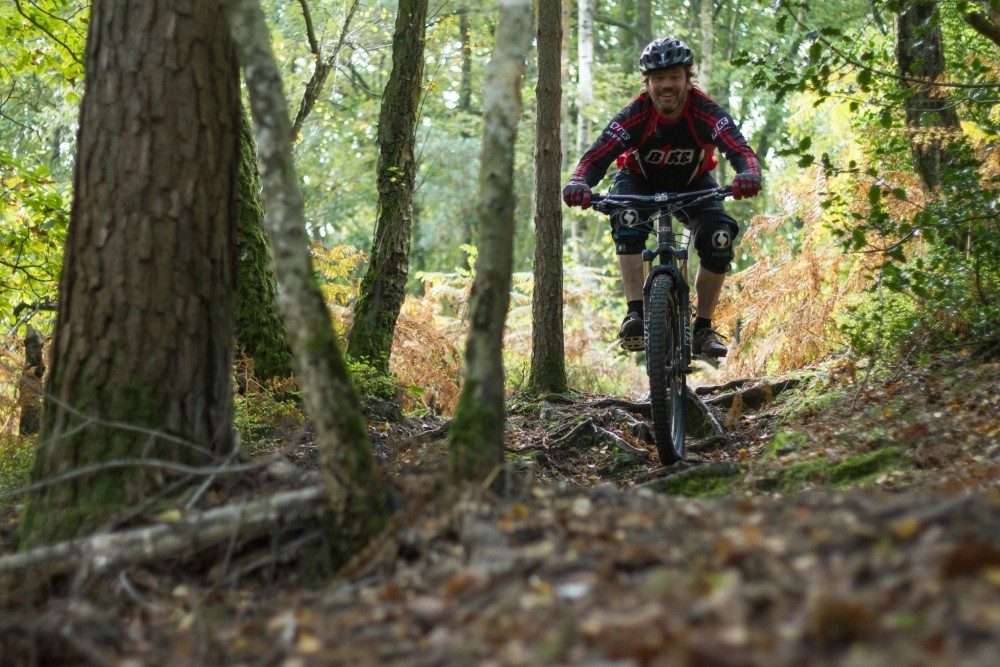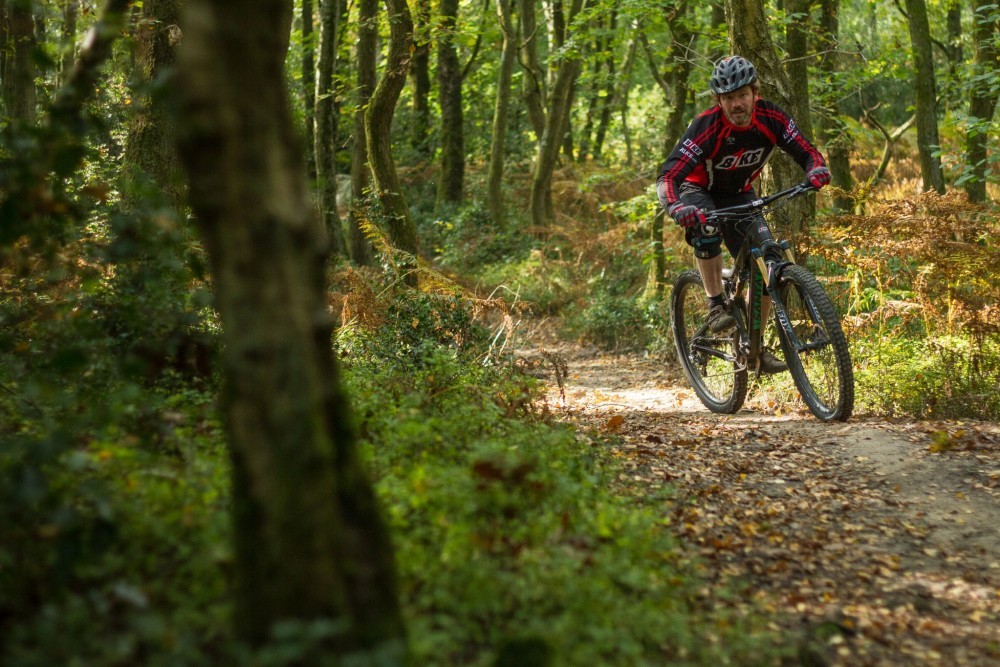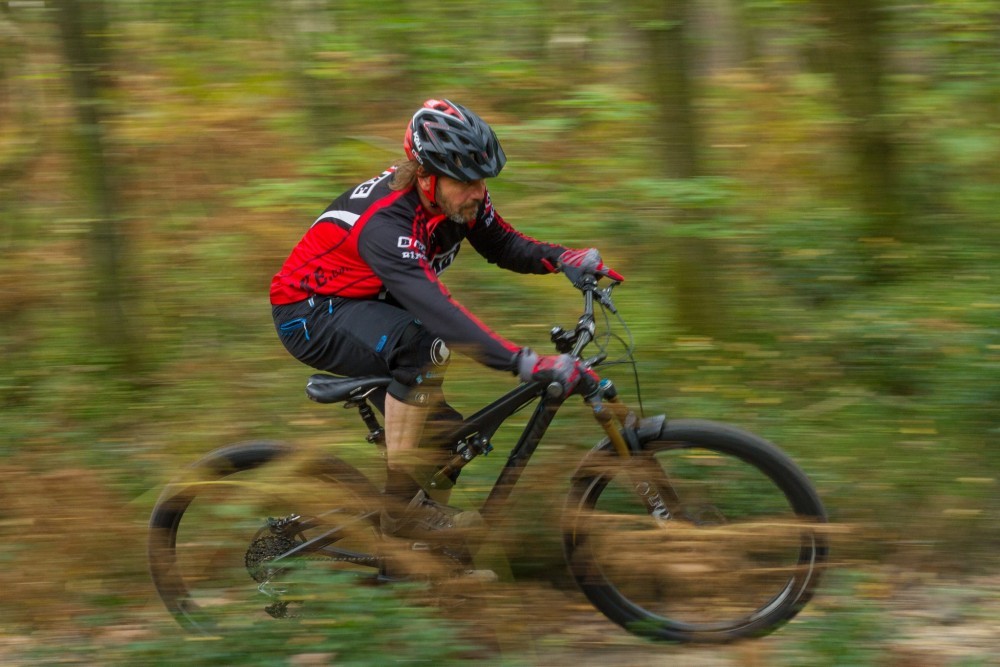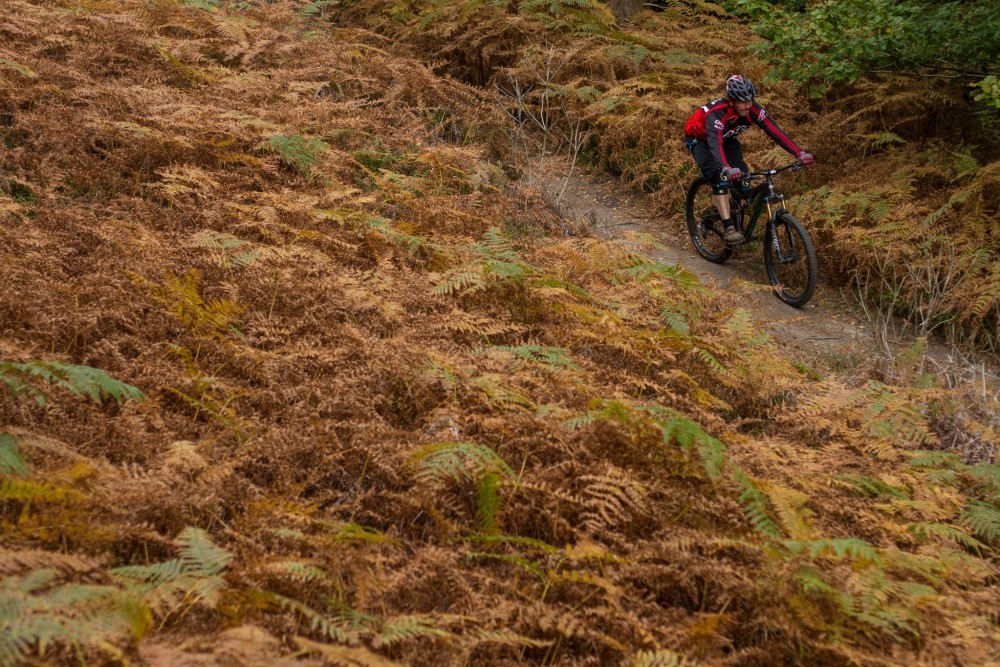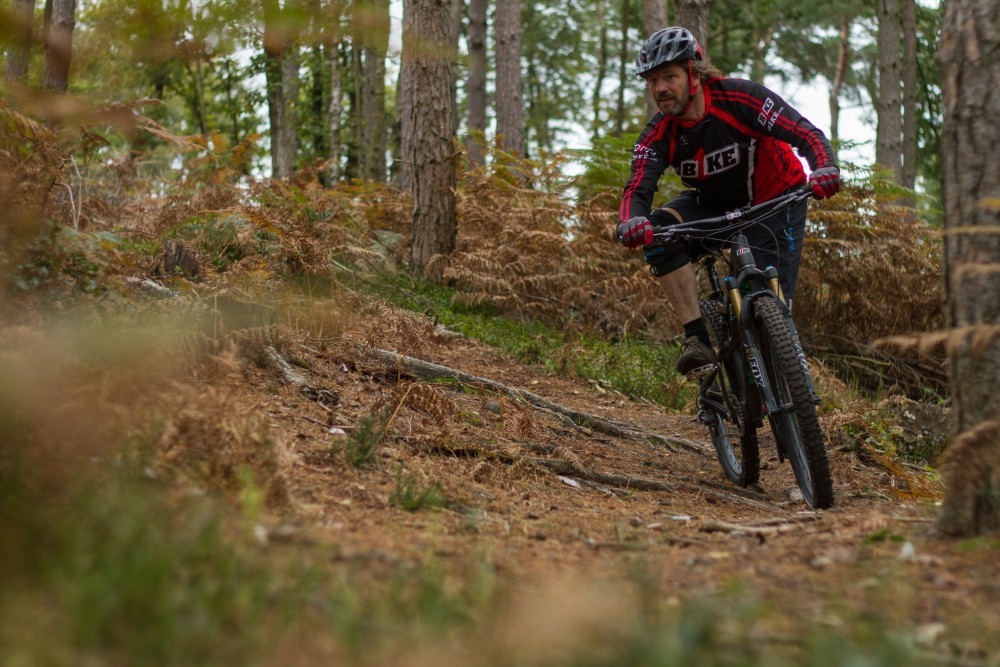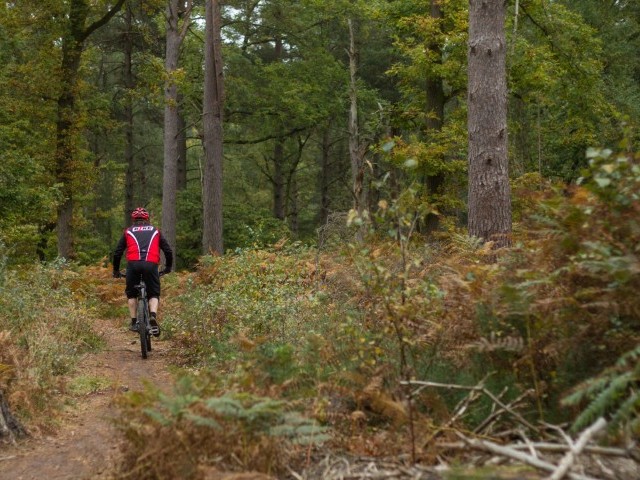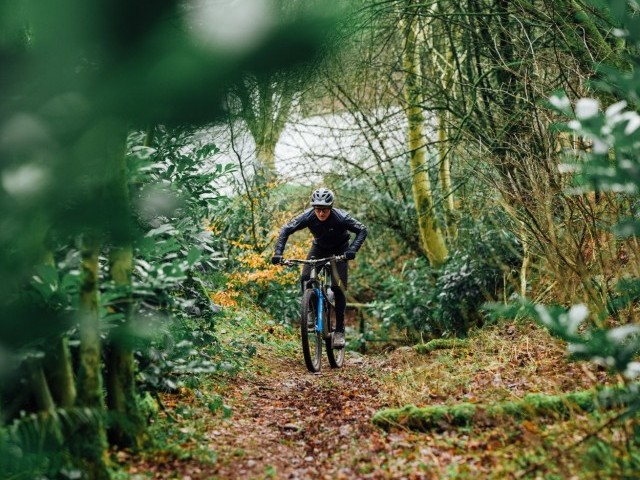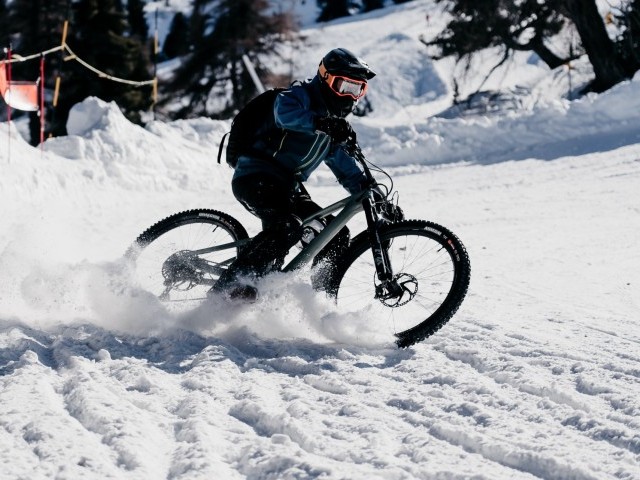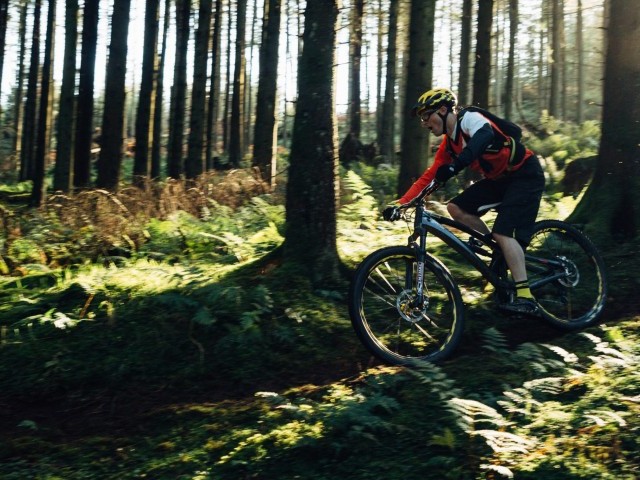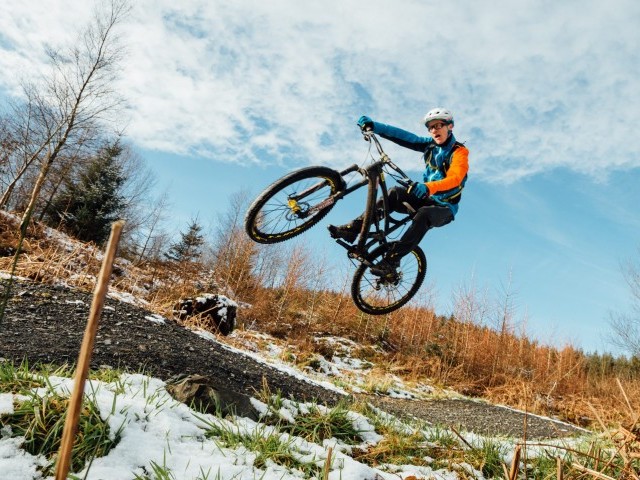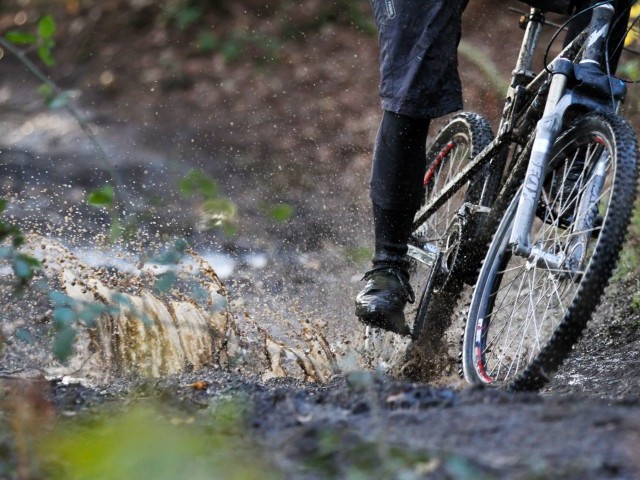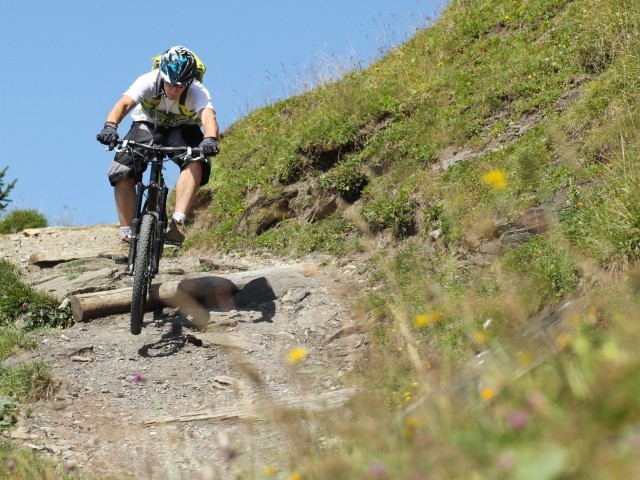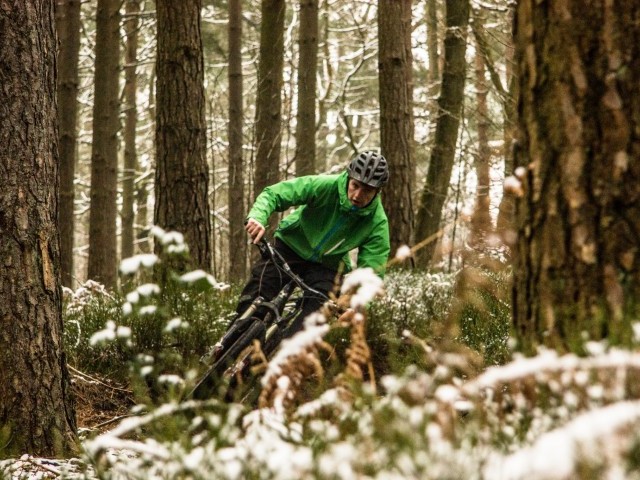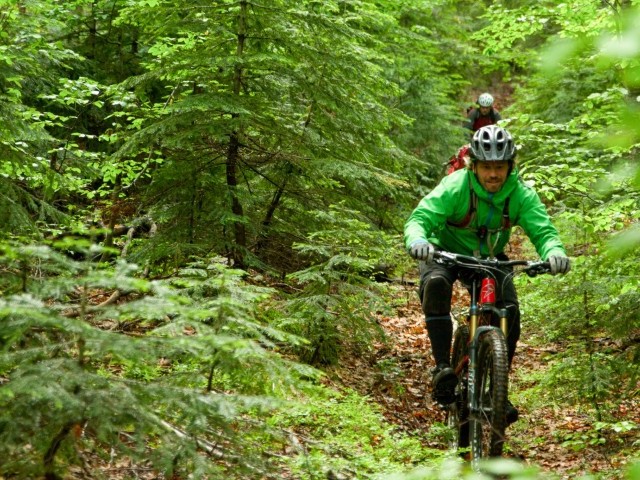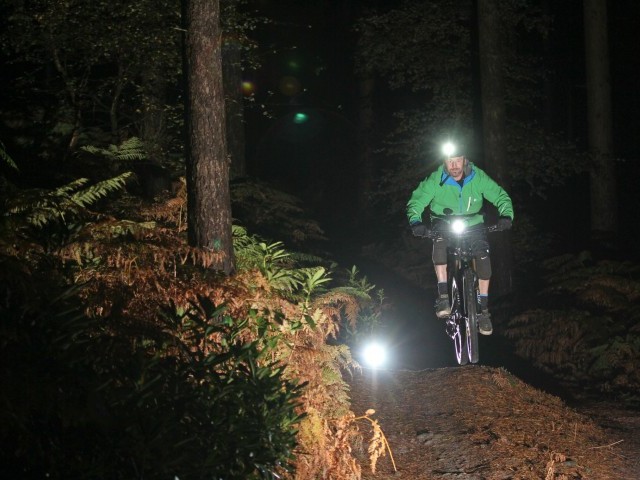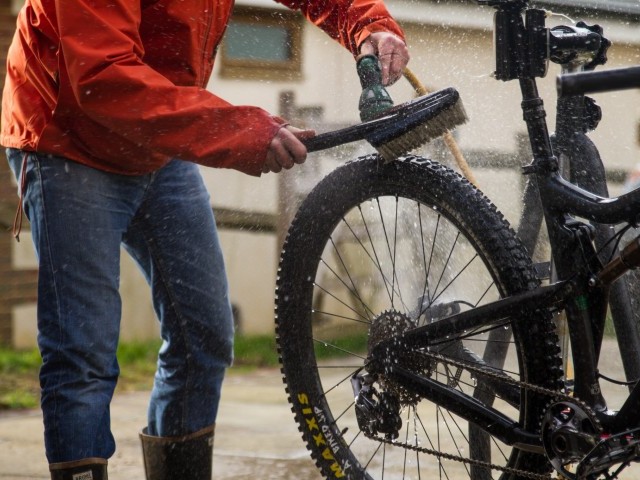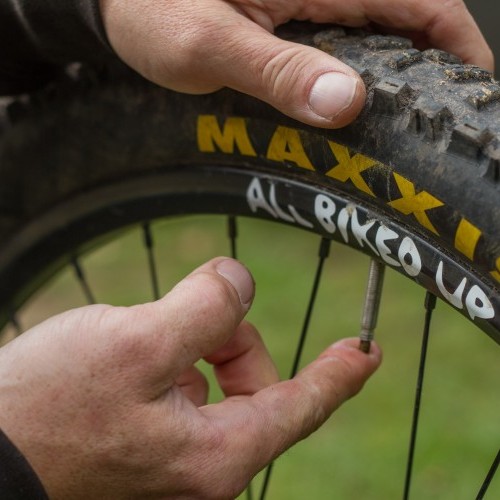
Seasonal Adjustments
Technique / Seasonal Riding
Introduction
For Northern Hemisphere riders, another Summer is fading into memory. On the plus side, the soft light of Autumn makes for some fantastic vistas and epic riding - the days may be shortening, but there is plenty of riding still to be had. The light isn't the only thing to soften up and a change in trail conditions may well be on the cards.
Through the summer months, firm packed, fast rolling trails with a more constant surface, pumpable transitions and far less in the way of moisture, can lull you into a false sense of security. Taking grip for granted and being given a little more leeway by Mother Nature when we err, can lead riders to get a bit lazy in certain areas.
Through the Summer, with washouts less likely and traction more available, 'getting pushed' goes less punished.
With this in mind, this issue we look at a few key areas where the changing conditions might require us to refocus our skills to keep our wheels running smoothly. As well as the 'how-to' and 'why-to' in terms of our riding, changes and adjustments to our setup are also worth some consideration.
Setup to Succeed
As trails soften, roots glisten, and trail surfaces start to degenerate, traction is the first big consideration. This is not just traction between the bike and the trail, but also between rider and bike.
Revitalising pedal pins if they are snapped and worn is a good place to start or just making an investment in a new set. Good control requires good contact with your bike and your feet is where it all begins. If you’re riding clipless, then conditions can cause clogging of cleats making engagement more problematic. Once clipped-in, a desire to be able to get a foot down fast may be more common as conditions worsen. Switching to flats you won't have this worry, nor have to engage in any internal dialogue as to “should I unclip for this bit”. Just knowing you can get a foot down fast if needs be might be enough to relax you more into the bike and make the need to actually 'dab' less likely.
Replacing grips and making sure (new or old) that they are fully secured is a cheap and easy way to improve your on-bike performance. How so? If you are confident in your contact with the bars, it is far easier to avoid death gripping. Bad at any time of year, death gripping exaggerates inputs and will make for a far more twitchy ride. This exaggeration affects both inputs through the bike from the trail to you and vice versa. You can literally, squeeze the bike out from under yourself if you tense up your forearms and stop the rise and fall of the front wheel as it tries to track the trail; or get thrown about more merely by gripping your bars too hard. The knock-on effect of fearing you will lose the bars from your palm and gripping tightly is more tension in the upper body as a whole.
With softening trails covered with a seasonal smattering of organic material, slowing the rebound a little and softening your set-up a little may also help cushion inputs from you to the trail and the trail to you. A bit more give might well help you find a bit more grip. With more trail clutter in the form of leaf fall, trail features that can create an unexpected, sharp input (stalling your bike and/or pushing you forward) might well be obscured. Creating a more forgiving feel to your suspension might alleviate this issue even if it does cost you a little in terms of the power of your pump.
After a summer shredding on hard packed trails, replenishing your rubber is a good idea. A wider profile tyre and more aggressive tread pattern will offer more contact with the trail and help in the search for grip that, although sometimes harder to locate, can be found. Higher volume tyres with a greater surface area can also be run at a lower pressure without the worry of pinch flats. This will offer up more traction when required and, if kept within reason, shouldn't increase your rolling resistance too noticeably.
A final tweak to your bike set-up is one that for many is painful to accept. I speak from experience and as a self-confessed bike tart. Aesthetically not the most pleasing addition to a bike: front and rear mud guards do change the game. Over the years a variety of designs, particularly at the front end, mean keeping crud out of your face is less likely to make your eyes bleed when you look at your bike. Whether catching crud or hugging mud, sleek(ish) guards can seriously improve your ability to see what is what when the mud starts to fly. If you have no shame, then a rear guard will keep you arse drier and make for a more comfortable ride too.
With a few seasonal adjustments to your set-up made, it is time to consider the top five technique tips to prevent fails this fall.
Sit into your bike - When trails are firm and surface more constant you might get away with riding high on your toes and poised with elbows up and forward. Luck, rather than judgement, reigns if you ride around like this. Just because in A1 conditions you get away with it doesn't mean it is a good idea. With the sudden decelerating effect, soft terrain can have on your bike you need to be better prepared. If the bike suddenly slows and you are too on top of it rather than pushing into it, you are gonna get a 'push'.
Accelerating faster than your bike and becoming the over-rotating mass will at best hamper your front wheels progress further, and at worse see your front wheel washing out or you going up and over the bars. By dropping your heels at the wrists, keeping your shoulders more above your hips rather than bending excessively at the waist, it is easier to stay in 'the pocket'. If and when you get pushed the energy is driven through the bike, accelerating it beneath you. Pushing into heels and wrists sets you up in a position where you are the under-rotating mass.It will help drive your bike through soft sections in the direction intended. Driving hard through the feet you can accelerate the bike anticipating any additional drag that softer surfaces create.
Lowering your centre of gravity will help you control the bike if it slides and be more likely to prevent the bike washing out below you should off-camber, roots or mud present a path of less resistance than the one you are aiming for. If you are looking at the other end of speed control and wanting to brake with power and control, sinking into the bike by dropping your heels and wrists will help both front and rear wheels find the traction required. Pumping down into your heels as you brake will help the tyres cut through any soft matter and find something a bit firmer to grip against.
Brake only when you mean it and aim to accelerate through sections – It’s easy as trail conditions change to take a more cautious approach and end up dragging your brakes excessively. All the time you are slowing a wheel (particularly on unstable ground), you are presenting the wheels with an option to find a path of less resistance.
Yes, you need to control your speed, but continually fighting against the bike when it wants to accelerate will lead to you having to work a lot harder not to get 'pushed'. Setting your speed prior to the entry point of a section so that you are in a position to happily accelerate through it is the aim. You will find more grip and control in corners, over roots and through softer ground if you are accelerating through or over them.
Despite what the health and safety man (or woman) within us might believe, decelerating does not make it easier to corner, overcome obstacles or find grip. It is always worth remembering that there are eight elements in the physical skill set and applying them all in an equal fashion will lead to more success than simply relying purely on speed control. If you focus on the other elements more (footwork, looking, body position, entry, section, exit, and energy management) you'll rely less on speed control as the defining factor to the success of your ride. When you do want to decelerate, get it done and then get back to letting the bike run.
Manual for momentum - Useful as a trail technique all year round the manual is an especially effective technique once surface water is more apparent or trails punctuated by soft patches. When your front wheel hits, either it can push you forward as the front wheel slows and meets greater rolling resistance. By driving through the pedals and bars, driving your torso rear of the centre and accelerating the bike, you can lighten your front wheel so that it floats over the obstacle.
Where puddles are concerned, if you can manual the front wheel over them you will be less likely to get a face full of water. When the back wheel hits the water or mud, if you have driven rear of the bike's centre line, you are more behind the back wheel, driving it rather than towing it. Although as the rear wheel meets more resistance it may cause your front wheel to drop, it is less likely to see you pushed forward and down into your bars. You don't need to be able to balance on the back wheel indefinitely and the mere action of accelerating the bike will help you keep better control as it meets resistance in the form of mud or water.
Don't get sucked in - Your tyres may cut deeper and the bike may get bogged down more easily, but these are not the only way changing trail conditions can suck you in. Visually there may well be more to distract you. It’s easy to look into muddy lines and puddles, your eyes dropping and stalling for too long on each one in turn.
The dropping of your head and shoulders just a few degrees can hamper your progress and set of a chain of events that lead to a downward spiral. If it is a transition that is downhill to flat this forward rotation just at the point where water may collect or the ground is likely to be softer is particularly problematic. Mentally it is also easy to think 'to' and not 'through' a section particularly if we have a level of expectation as to the potential negative scenarios.
Worrying about what might be, rather than focussing on the positive actions we can take, is an easy mistake to make. If the brain and eyes stall it is likely the bike will too. Tyres leave more obvious marks in a soft trail and it is easy to follow the track of others than pick the line that is right for you. The tyranny of the tyre mark is far more prevalent when trail conditions worsen.
Commit to your lines - It's easy to be bullied away from lines that look more technical, or attempt them in a half-hearted manner especially when they are wet or soft. If you leave your decision-making too late, you will always end up on the easier looking line even if it is not the best choice. Make line choices before the entry point to a section, not as you are passing through them.
Commit to the direction you want to head with your whole body. Use hip twist and footwork in cambers and corners. Point your head, shoulders, chest and hips in the direction you want to travel and when you lean the bike stay over the line of the tyres, rather than leaning too much with it.
Grip is available all year; sometimes it is its just harder to find. By pushing into the trail more assertively you are likely to find extra grip than by being tentative. There is far more to making technical lines than the compound or pressure of your tyres and commitment plays a massive part. Remember, 'slippery' is a state of mind.
The Autumn can provide some of the best riding conditions and some stunning scenery to boot. Making the most out of it might take a little adjustment in how you set up your bike and your approach to riding. Although prevailing trail conditions may be softer, slicker and less stable applying best practice will reap rich rewards.
You'll also get to experience those Goldilocks days when trails are not too hard and not too soft, with just the perfect amount of give to push into, and when temperatures are not too hot nor too cold, but just right for shredding the limited daylight hours. Shortcomings will be exaggerated for sure, but getting a little reminder from Mother Nature as to where our skills need developing is no bad thing.
Experiencing more challenging conditions and developing the right approach to them will help you develop as a rider enormously. This Autumn rather than celebrating the fail, embrace the challenge and celebrate the Fall!
This technique article was in Issue 38 of IMB.
Related
By Richard Kelly
Richard Kelly has been riding bikes since forever, and teaching people to become better mountain bikers for over a decade. He’s always out in the Surrey Hills training riders, building trails and riding for himself whenever he gets the chance. His unique perspective on mountain bike technique has earned him fans the world over, with some speculating he is actually Jamiroquai or perhaps Jack Sparrow…






